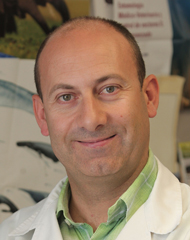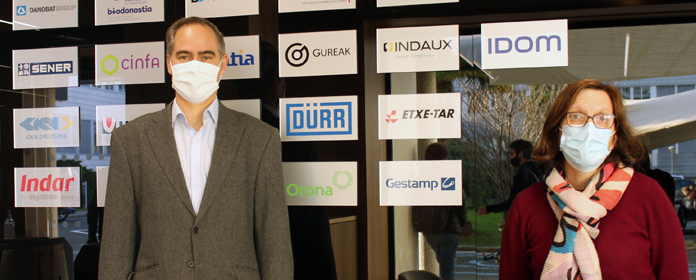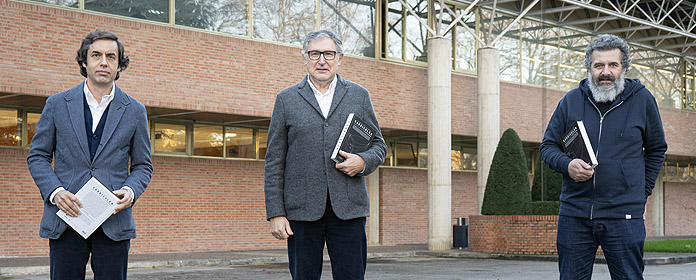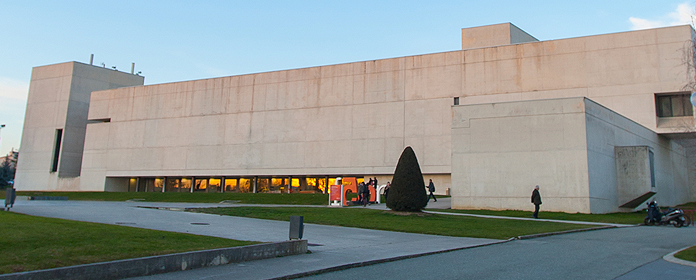A new species of springtail discovered in the Altamira Caves
The arthropod, similar to an insect and little more than a millimeter in size, acts as a vector for the dispersal of microorganisms and scientists propose to study whether it contributes to the deterioration of the paintings in the Cave.

PHOTO: Manuel Castells
Spanish researchers have discovered a new animal species in the Altamira Caves: a springtail belonging to the genus Pseudosinella. Springtails are a group of hexapod (six-legged) arthropods similar to insects, which have a specialized organ for jumping. The study, published in the journal ZooKeysThe study, published in the journal, is led by University of Navarra researchers Enrique Baquero and Rafael Jordana, together with biologist Lucía Labrada and environmental consultant and biospeleologist Carlos Glez. Luque.
The species has been named Pseudosinella altamirensis and, because of the way it behaves in the Altamira Caves, scientists suspect that it may act as a vector for the dispersal of certain microorganisms, either because they remain attached to its body, or because they are digested and dispersed with its excrement.
Enrique Baquero, who led the study, explains that Altamira is a particularly sensitive cave, as it has a very high microbial diversity. "The springtails are almost all fungivores (they eat fungi). In a cave where there are valuable paintings, they can get fungal spores into them and they could deteriorate," he says. Therefore, we propose to develop a study "to find out if Pseudosinella altamirensis (the new described species) is a problem or not", explains the professor of Zoology and Ecology, and researcher of the high school of research in Biodiversity and Environment of the University of Navarra (BIOMA).
To know if it acts as a vector for the dispersion of microorganisms, according to Lucía Labrada, it is easy to check if the digestive tract of the springtail is observed under the microscope. "We have suggested to the management of the Altamira Museum to investigate whether they maintain a exchange of bacteria with the colonies living on ceilings, walls and floors, thus contributing to the dispersion and diversification of the bacterial communities present in the Cave, especially those involved in the processes of biodeterioration," concludes Labrada.
Work financed by the Government of CantabriaThis finding has been produced during the work carried out in the Community of Cantabria by Carlos Glez. Luque, financed by the Government of Cantabria. The research began in 2000 with the study of the invertebrate fauna of the Altamira Caves, with the support of the National Museum and the research center of Altamira and its director, José Antonio Lasheras, to whom the publication is dedicated to degree scroll posthumously.
The small size of the new species (just over 1 mm long) has not been an impediment to find it in other caves in Cantabria. A singularity of this finding, if we compare it with the vast majority of new species that are described today, is that "no one had ever found or studied this springtail; something striking, given the importance of the Altamira Caves", emphasizes Carlos González Luque.
Rafael Jordana, Full Professor emeritus of Animal Physiology and Zoology at the University of Navarra, points out that "their existence would have gone unnoticed because they inhabit soils that maintain a large number of hollows and free spaces that serve as a route for movement, escape and refuge". Inside the caves "their feeding habits, behavior and population structure are closely related to the availability of nutrients and environmental conditions that favor or hinder the presence and proliferation of microbes," he says.
Bibliographical referencesBaquero E, Jordana R, Labrada L & Luque CG (2020): A new species of Pseudosinella Schäffer, 1897 (Collembola: Entomobryidae) from Altamira Caves (Cantabria, Spain). ZooKeys, 989: 39-54.
Luque CG & Labrada L (2016): The subterranean fauna of the Altamira caves (Spain). Considerations for the conservation of rock art classified World Heritage. bulletin de la Real Sociedad Española de Historia Natural, Sección Biológica, 110: 93-120.
contact: ebaquero@unav.es




